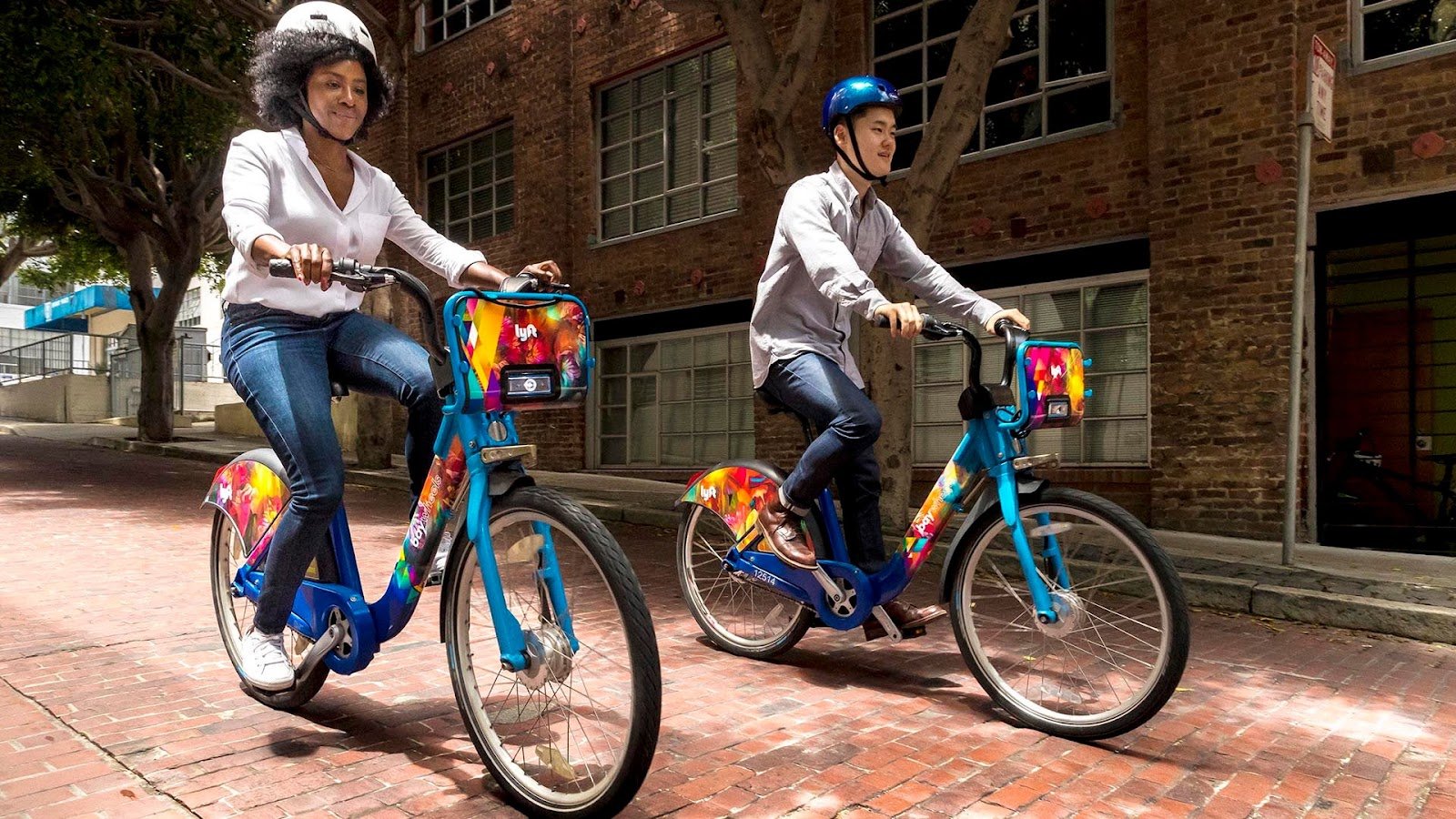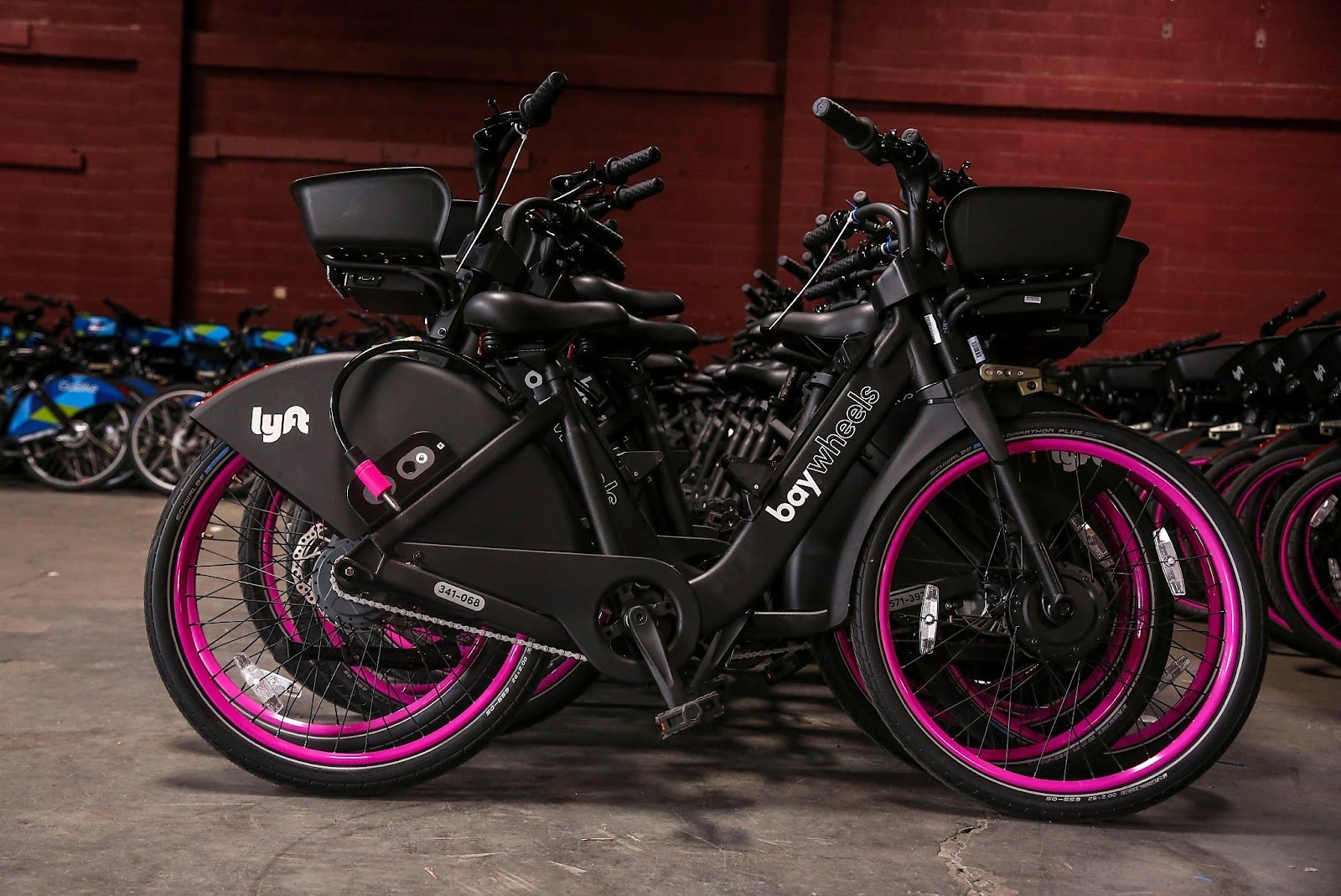A Path Toward Seamlessly Integrated Bikeshare and Micromobility
The future of Bay Wheels -- the Bay Area’s bike-share network that now carries over 1 million daily trips -- will be considered by MTC over the next three years, and provides an opportunity for the Bay Area to craft a more effective micromobility network that is seamlessly integrated with transit and is affordable, reliable and accessible.
On Friday, November 4th, the MTC Operations Committee discussed the start of a three-year process to determine the future of shared micromobility - public transportation using bikes, e-bikes, and e-scooters - in the Bay Area. This is in preparation for the end of the 10-year Bay Wheels bike share contract in 2027.
MTC’s summary showed that the Bay Wheels program has become a well-used part of the region’s public transportation system, but bike share micromobility services outside of the Bay Wheels system were struggling. Meanwhile, San Mateo County’s City/County Association of Governments is developing their own separate program for shared micromobility across San Mateo County.
Widespread Adoption and resilience
Since the launch of Bay Wheels in 2017, 11 million trips have been logged by riders. When compared to other Bay Area transit agencies, Bay Wheels would rank eighth by ridership.
The most popular locations for shared micromobility have been at BART and Caltrain stations, showing that micromobility serves as a valuable first and last mile complement to transit.
Table - 2019 yearly ridership for Bay Area transit
MTC’s data showed that the use of micromobility recovered more quickly from the steep decline at the start of the Covid-19 pandemic than other forms of public transportation. This is especially true with e-bikes, which only saw a 9% decrease in ridership in San Francisco after the beginning of the pandemic in 2020, and has already recovered to a higher level of ridership than 2019. While ridership effects varied further depending on the city, shared e-bikes appear to be among the most desired and consistently utilized modes of transportation when they are provided abundantly.
Affordability and access
When it comes to access, however, affordability is an issue. In April 2022, San Jose added premium pricing for e-bikes, resulting in ridership decreasing sharply and riders shifting to ‘classic’, non-electric bikes, or opting to avoid micromobility altogether.
Craig Dittman, shared micromobility program manager for the City of San Jose, explained that ridership in the city has concentrated in more affluent areas, leaving sparse micromobility coverage everywhere else. As Dittman put it; “Even though scooter companies provide a public service, their M.O. is not transportation justice and equitable access.”
Bay Wheels has introduced the Bike Share for All program, which limits prices to $5 per month and awards a 75% discount on e-bikes for low-income riders, who make up 10.5% of all Bay Wheels members. While this isn’t a perfect system, it has made progress towards expanding bike share access to people who need it the most.
Fragility and Fragmentation
However, in areas of the region not served by Bay Wheels, service has been more fragile. This has been the case in Alameda, Fremont, Richmond, and Marin, where micromobility programs have disappeared or been halted indefinitely.
The rollout of e-bikes is a case study in fragmentation and uneven deployment. Lyft began to add e-bikes to the Bay Wheels system after its initial contract had already been signed, so it went back and came to individual agreements with each city it operates in. E-bikes are by far the preferred and most heavily utilized form of shared micromobility, yet disagreements on contract terms led to San Francisco being the only city to gain more widespread e-bike access. San Jose gained e-bikes but implemented a premium price for their use, resulting in lower ridership.
The East Bay, unable to come to an agreement, was left in an even worse position, having to find additional private companies to run their own shared e-bike service. Within two years, most of these companies had gone out of business or stopped operating bikeshare.
The fragmentation makes micromobility much less convenient for people who spend time in multiple cities in the region. People who travel from city to city may need to download separate apps and create separate accounts in each city they travel in. The Clipper system, which provides a universal payment tool for other parts of the region’s public transportation system, is only minimally used for micromobility. Riders can register their Clipper card to unlock Bay Wheels bikes, but not to pay for rides.
The C/CAG Micromobility Feasibility Study - which contemplates creating yet another micromobility system for San Mateo County - acknowledges that this leads to “a fragmented micromobility market where users may be restricted to making trips within a specific town or city, users may have to switch between operators based on where they are traveling, and users have less predictability regarding user pricing and riding rules”.
Public and private sector
A lesson many are taking from the Bay Area’s experience with micromobility is that the reliance on a public subsidy-free business model is falling short in achieving public goals.
In 2013, the Bay Area Air Quality Management District (BAAQMD) launched the Bay Area Bike Share pilot with Alta Bicycle Share in five cities - Mountain View, Palo Alto, Redwood City, San Francisco, and San Jose. MTC used public funds to support the pilot until its end in 2015, where they approved an additional $16.4 million to expand the system.
However, Motivate (acquired by Lyft in 2018) offered to operate the system at no cost to the public sector, shifting the direction of micromobility in the Bay Area for the next decade. In May 2015, MTC approved a 10-year contract with Motivate to grow the system to at least 7000 bicycles in Berkeley, Emeryville, Oakland, San Francisco, and San Jose, and in 2018 the system was rebranded to Bay Wheels. Since then, Lyft has negotiated with individual cities outside of their original contract to include e-bikes in their system.
Aside from Bay Wheels, subsequent micromobility systems were all developed through individual permit programs, with some cities gaining grant funding through MTC’s Capital Grant program to pursue bike share in less dense areas. These include Richmond, Fremont, and Marin, as well as development of the SMART corridor through Sonoma and Marin Counties. However, these programs have proceeded in fits and starts as companies have failed to meet their profit goals and gone out of business. Multiple Peninsula and South Bay cities permitted private bike and scooter share operators that have also gone out of business.
Observing the fragility and inequity in the current system, many transportation advocates want to see a new approach. Robert Prinz, Advocacy Director at Bike East Bay believes “we need to see public funding used to provide broader, more stable, more equitable access.” During public comments at a recent MTC Operations Committee meeting, he added “We do know how to make bikeshare successful here in the East Bay, and we have examples of it being successful. The problem has been that the public agencies don’t have control over the decision making process, which has led to some of the problems that we’ve seen.” “If we want to have these decisions be in-line with our equity and access goals, the region needs to think of this as an extension of public transit, and take ownership over the system and the decision-making.”
In setting the direction after the expiration of the Bay Wheels contract, MTC staff proposed to return in coming months with concepts for focused public investment. Encouraging this, George Spies commented “The Commission is open to and thinking about a system that I think should be publicly governed, subsidized, regional, offering a spectrum of devices, so that as many people as possible can use the system.” “A coordinated, publicly-governed system with subsidy is what is really going to make this work, because once somebody gets in their car to go to the transit station, what is going to stop them from just staying in the car? You’ve gotta stop the car from getting started in the first place and the way to do that… (is) to have a widely-distributed, easily available, coordinated, integrated system where I can use my Clipper on the active transportation, I can use it on the bus, on the BART, the ferry, etc., and that’s really gonna make a huge difference.”
A path toward a seamless, accessible system
As the region starts to plan for micromobility after the Bay Wheels contract, it is possible to envision a system that is better connected, affordable and accessible. Seamless Bay Area and advocacy groups including San Francisco Bicycle Coalition, BikeEastBay, Silicon Valley Bicycle Coalition and Marin Bikes sent a letter urging the MTC to head in this direction.
The next public meeting to discuss the direction for regional bike share and micromobility is the December 14th meeting of the MTC’s Policy Advisory Council. The agenda will be available a few days before that meeting. We’ll keep you posted on next steps and opportunities to weigh in.




